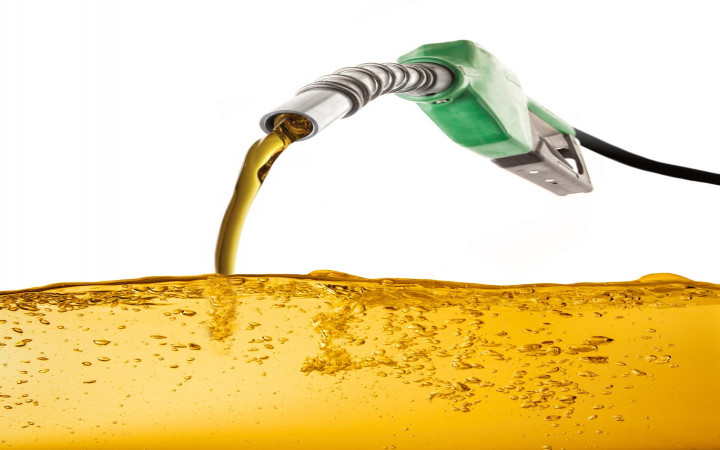Vroom! Vroom! There's nothing like the sound of a revving engine as you get ready to hit the open road. Before you set out on that epic road trip, however, there's one stop you need to make: the gas station.
You're not going to get far down the road without a full tank of gasoline. Wouldn't it be great if you could just pull over at a stream of gasoline and fill up your car from a hose in your trunk? Unfortunately, the world doesn't work that way!
The gasoline that powers your vehicle doesn't occur naturally like water in a stream. So where does it come from? Gasoline actually must be produced from a thick, dark substance pumped from deep underground. We call that substance crude oil or petroleum.
Crude oil is a fossil fuel. That means it was created from the remains of tiny plants and animals that lived millions of years ago. Those remains were covered with layers of sediment that were subjected to high pressures and temperatures for millions of years to produce the mixture of liquid hydrocarbons we call petroleum.
Hydrocarbons are organic chemical compounds made up of hydrogen and carbon molecules. Petroleum consists of hydrocarbon chains of all sorts of different lengths. The overall length of a particular hydrocarbon chain depends upon the number of carbon molecules present.
Crude oil is made up of a mixture of hydrocarbons that can be turned into a wide variety of products. For example, very short chains of one to four carbons form the petroleum gases known as methane, ethane, propane, and butane.
Hydrocarbon chains of five to seven carbons form solvents, including dry cleaning fluids and paint solvents. The gasoline we use for automobile fuel is made up mainly of hydrocarbon chains with seven to eleven carbons.
The hydrocarbon chains that are longer than twelve carbons are used for heavier fuel oils, including kerosene, diesel fuel, and heating oil; lubricating oils, such as engine oil; and solid forms of petroleum, including paraffin wax, tar, and asphalt.
How do scientists separate out all these different lengths of hydrocarbon chains? They rely upon the fact that different hydrocarbon chains have different boiling points. That means the different chains can be separated out through a process known as distillation.
Distillation occurs at an oil refinery. At the refinery, crude oil is heated in a distillation column. As the temperature rises, different hydrocarbon chains boil off at different points. As they boil off, they can be siphoned off and recovered as they condense at different temperatures.
After initial distillation, the exact gasoline product that is desired is produced by various other processes. For example, other ingredients, such as ethanol, may be blended with the gasoline. In addition, specific additives may be included to enhance engine performance or to achieve a particular octane rating.
Once crude oil has been refined into gasoline, it's usually pumped via a pipeline to large regional storage terminals. From these terminals, gasoline can be loaded into tanker trucks for delivery to specific gas stations where you purchase it for use in your automobile!




